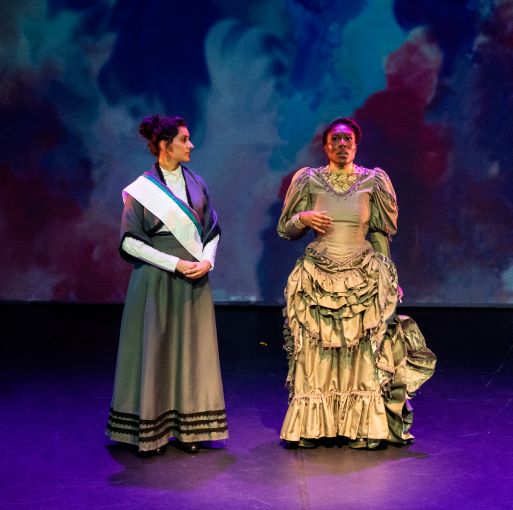
Gaming Editor Benjamin Oakden attends She’s Royal and finds the production highlights the significance of imperialism in the British Empire very well
Tonia Daley Campbell’s new play She’s Royal is designed to bring to life the stories of two extraordinary women of colour who are often overlooked during narratives of the Victorian era. These two women are Sara Forbes Bonetta, an Oba of the Egbado people of modern-day Nigeria who would become a goddaughter of Queen Victoria, and Sophia Duleep Singh, the daughter of an exiled Maharaja who later became a campaigner for the Suffragettes. For highlighting these two stories for modern audiences, She’s Royal already deserves praise, even if there are areas of the plot which might have been handled better.
Before seeing the play, I was interested to see how they would handle the complexities of the close relationship the two women had with Victoria to her status as an imperialist symbol. She’s Royal handles this conflict very well, Sophia in particular is shown to struggle with the role that the British Empire had in displacing her father from power. Victoria too is handled with good complexity, her personal kindness towards her goddaughters is shown to be genuine and more accepting than many of her contemporaries, and yet she can often be condescending and naïve to the oppression that is carried out in her name.
She’s Royal handles this conflict very well
To me, the greatest strength of She’s Royal is the number of themes and ideas that it incorporates, whether it is the conflict of identity between your ancestorial home and the home you were raised in, to the ability of historians to silence areas of the past, Campbell’s writing is filled with interesting and mature ideas, many of which hold significant contemporary relevance. The commitment to intersectionality within the play is also admirable, with the play taking on several feminist themes and having an all-female cast. However, I feel that the intersectional elements of the play are weaker when it comes to issues of class; since the three main characters are descended from Royal Families, it was a little disappointing that more wasn’t included on issues of class, especially given how strong Campbell’s political themes are in other areas.
Arguably, the main weakness of the play comes from its overall plot, which feels a bit disconnected. I was surpised to find that She’s Royal was actually a time-travel story, with five friends from the modern-day West Midlands being transported back in time to interact with these historical figures. These characters double up as both comic relief and to give the play contemporary relevance. While the actresses portraying these characters do so with great enthusiasm, I feel these characters offer very little to the story. Their humour can often times be a little too garish, with sexual jokes and references to selfies being quite distracting at times. Their second purpose is to act as social commentary to bring the morals of the play to the present day, something that I feel was a little unnecessary.
Campbell’s ideas are strong and nuanced enough to hold contemporary resonance on their own, and yet the time travelling characters often serve to just explain the morals of the play to the audience in an incredibly unsubtle manner, despite those morals being clear enough for the audience to work them out themselves. In an attempt to avoid leaving anyone behind, these characters end up standing out as a little too heavy-handed for the nuanced themes the play has to offer.
Campbell’s ideas are strong and nuanced enough to hold contemporary resonance on their own
The stories of Bonetta and Singh are the real backbone of the play. Bonetta’s story shows her being forced into an arranged marriage despite her desire to marry for love, with actress Karina Holness giving an excellent emotional performance to really sell the character’s woes, although the conflict resolves itself far too quickly with Bonetta shown to be happily pregnant only one scene after she is distraught over the marriage. Singh’s story of using her father as inspiration to become a campaigner for Indian independence and women’s rights is an inspirational one but also a little rushed, only being introduced in the shorter second act. Given that, in reality, Singh was born only six years before Bonetta died, perhaps the two stories could have been stronger if they were told individually, giving them more room to breathe instead of forcing the two separate figures to interact.
Despite several frustrating issues regarding the plot, She’s Royal is a production with a lot of valuable and interesting things to say. A passionate cast give life to complex and interesting themes of gender and race, and the commitment to uncovering hidden stories makes the play very valuable. It’s just a shame that a more streamlined story and subtle messaging could have taken that excellent base even further.
Rating: 3/5
Enjoyed this? Read more from Redbrick Culture here!
Comments